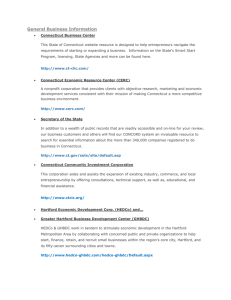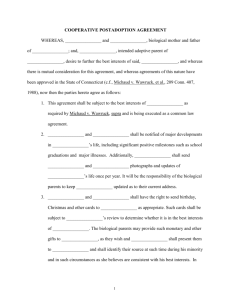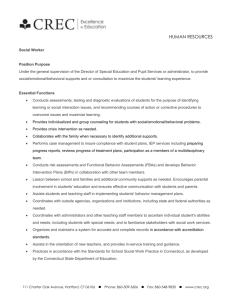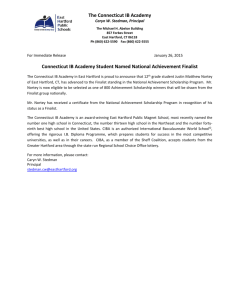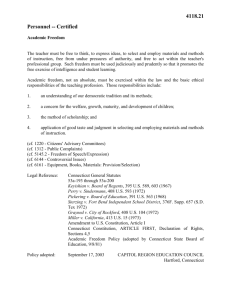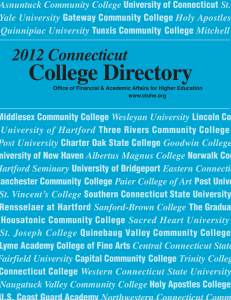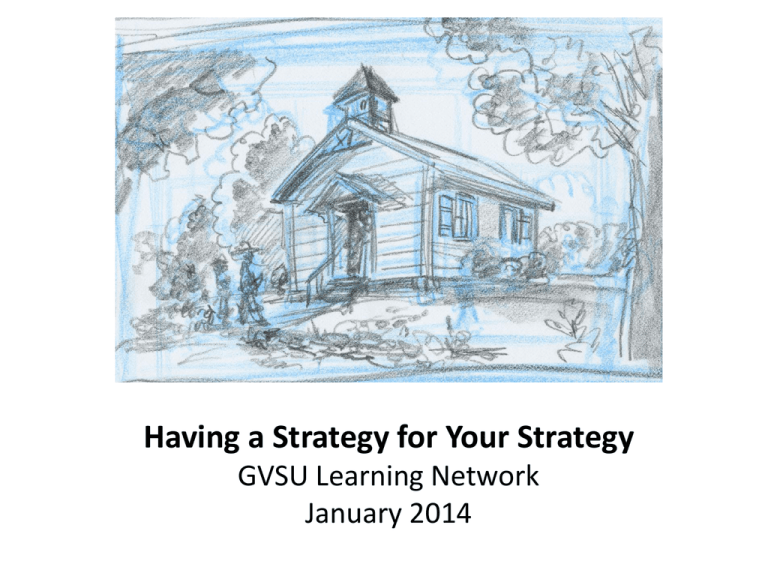
Having a Strategy for Your Strategy
GVSU Learning Network
January 2014
Essential Questions
What progress have we
made in implementing our
instructional improvement
strategies?
How might we strengthen
our implementation for
even a larger impact?
Agenda
I. Welcome, Agenda Review, Norms
II. Video Observation Exercise: What are Students
Learning and How do We Know?
III. Stock-Taking: How is Our Work Going This Year?
What Is Our Work For the Rest of the Year?
IV. Text-based Discussion
V. Performance Management: Getting It Done
VI. Action Planning
Learning Network -Norms
• Silence mobile phones
and other devices
• Be present and engaged
• Listen actively
• Make this relevant to
your work and your
school
• Call the baby ugly (call it
like you see it)
• Reduce side
conversations
• Come prepared
• Speak honestly
• Vegas rule—share ideas,
but protect people,
schools, sensitive issues
• Share speaking
opportunities—watch talk
time
• Avoid negativity and
complaining
• Arrive on time, start on
time, end on time
Learning and Teaching in the Classroom
A Descriptive Framework
Environment
Teacher
Task
Student
Content
Video Observation Exercise
Task 1: Observe the lesson segment.
• Gather evidence regarding what is occurring in
the instructional core.
• Discuss what you observed
– Descriptive—Not Evaluative
– Specific—Not General
– Precise with Understood Vocabulary—Not Jargon
Video Observation Exercise
Task 2: Reassess your evidence to answer the
following question: What evidence do we have
of student learning?
• If a student were to successfully accomplish
the task, what would he or she really learn?
• What evidence do we have about how many
students were successfully accomplishing the
task?
Reflection on the Year’s Work
• What was our improvement focus for the
year? What goals did we set (outcomes and
implementation)?
– What successes have we experienced?
• How do we know?
– What are the ongoing challenges?
• How do we know?
– What is the next level of work for our school in
terms of improving learning for children?
Quick Reflection
• Identify one school improvement initiative
you have personally experienced being
implemented successfully (successful =
implemented as desired and generating
expected results).
– What explains the success?
– In other words, what are the lessons learned?
Performance Management
• The system through which an organization ensures
that goals are being met in an efficient and effective
manner.
http://en.wikipedia.org/wiki/Performance_management
Copyright © 2014 by Connecticut Center for School Change, Hartford, CT. All rights reserved.
Homework
• In paired schools, identify and consolidate the big
ideas from the readings about the key components
of a performance management system.
• How do the readings explain your success (or lack
thereof) with implementation of school
improvement initiatives? What do the readings
suggest about how to improve your execution?
• Make sure everyone in the group responds and
record your ideas on a t-chart. (20 minutes)
Copyright © 2014 by Connecticut Center for School Change, Hartford, CT. All rights reserved.
Components of performance
management system
Implications for our work
Reflection
• Post your charts around the room. With your
district team, review and consider the charts
from the other groups. (10 minutes)
• What did you notice in the gallery walk?
How do we make our vision a reality?
Why do we often struggle to deliver upon our
intentions?
Biggest Takeaways
• It is not about the plan; it is about how you
work the plan.
• Organizations don’t achieve ambitious goals
by accident; effective organizations
aggressively pursue goals with discipline.
• Leadership is critical to executing a vision.
Model of Individual Learning in Action
Goaldriven
problem of
practice
Reflect
Evaluate
Theory of
action
Design &
execute
actions
Copyright © 2014 by Connecticut Center for School Change, Hartford, CT. All rights reserved.
Model of Organizational Learning in
Action
Goaldriven
problem of
practice
Reflect
Evaluate
Theory of
action
Design &
execute
actions
Copyright © 2014 by Connecticut Center for School Change, Hartford, CT. All rights reserved.
The analogy . . .
A flywheel
What provides the leverage?
Engagement of
stakeholders necessary
for implementation
success
Leadership
routines for
surfacing and
solving problems
Reflect &
Adjust
Actions
Precise and “failable”
goals; benchmarked
targets; implementation
and outcomes
Goal-driven
problem of
practice
Formal and informal
accountability for
performance and effort
Leaders who surface
difficult realities
Evaluate
Theory of
action
Strategic
Planning:
Design &
execute
actions
Copyright © 2014 by Connecticut Center for School Change, Hartford, CT. All rights reserved.
Explicit, widely shared,
and often revisited logic
chain
Authentic planning
process that encourages
problem solving, not plan
completion
Next Steps
• What are you going to do with this?
Pick 1 area of implementation in your most critical
work that is not where you want it to be.
Assess where your school is on leverage points.
Identify action steps.
Use the supplied Strategy Action Planning Template to
the degree it is appropriate for your needs.
Improvement Strategy:
Getting Things Done Leverage Points
Precise and “failable” goals with benchmark
target (implementation and results)
Explicit, shared and revisited logic chain
Authentic planning process
Leaders that fearlessly surface reality
Routines for examining progress, surfacing
problems, problem-solving
Engagement of key stakeholders
Formal and informal accountability aligned
with implementing strategy and delivering
results
Notes:
Evidence of Leverage Points in Our School
Specific Actions We Will Take to Improve Leverage

